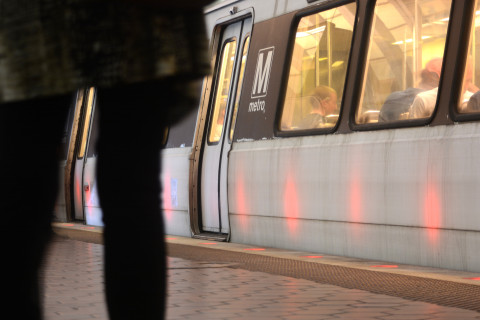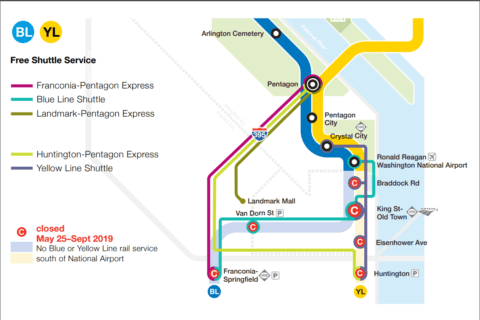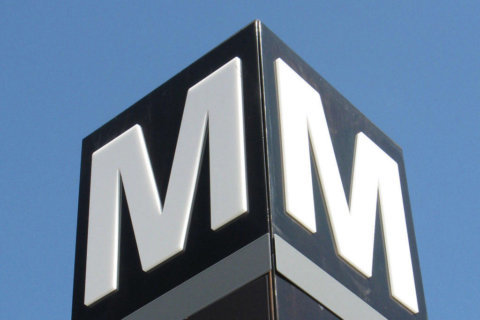Running more Red Line trains has helped increase ridership, despite Metro warnings to the contrary last year, new data suggest.
Since Metro began sending all Red Line trains past Grosvenor-Strathmore to Shady Grove last December, doubling rush hour service through Rockville, ridership has increased 4% at the stations seeing more trains and shorter waits.
Trains are less crowded and are in fact more likely to arrive on time given fewer issues turning trains around in the middle of the line and more consistent time spent on platforms with riders spread evenly across more trains.
Before, riders might be packed in on a train going to or from Shady Grove, while a train that started or ended at Grosvenor-Strathmore could be basically empty as it passed through Bethesda.
All this comes with little impact on ridership at Grosvenor-Strathmore. Ridership there was relatively unchanged, Metro spokesman Ian Janetta said in an email.
Metro had warned the increased service would not significantly help ridership, and could create problems managing trains at Shady Grove, claims Montgomery County had called “incomplete and mistaken.”
A presentation due to be given to the Metro Board on Thursday acknowledges Montgomery County’s projections were largely correct.
“Red Line stations west of Grosvenor have seen 3% increased ridership, with Twinbrook experiencing ridership increases as high as 8% during the January-June 2019 time frame,” the Metro Board documents said.
Parking usage also increased 4%, with the largest increases at White Flint and Twinbrook.
Had the same drivers gone to Grosvenor-Strathmore to find a seat under the old schedule, it would have meant more traffic on Interstate 270 or Md. 355/Rockville Pike.
The Metro Board is scheduled Thursday to provide another formal approval to continue running all trains to Shady Grove. The operations are already included in the agency’s budget for the year that began July 1.
There have been no problems with rail dispatching or the startup and wind down of service that Metro had warned about, the presentation said.
Adding more trains has also made it much easier to get in and out of Shady Grove station, ending the large backups from the platform to exit to the fare gates in the evening rush.
It is not certain how much of the ridership increase can be credited directly to the service increases and related improvements, or whether ridership at Grosvenor-Strathmore might have increased somewhat if there had been no change, since there were ridership increases in many parts of the system over the first six months of 2019.
Metro hopes to see additional ridership bumps and reduced delays in other parts of the system where mid-line turnarounds have recently been eliminated.
In late May, as Metro shut down stations south of Reagan National Airport, Metro added service at the other end of the Yellow Line by extending all trains to Greenbelt. That reduced wait times for more than 65,000 trips each weekday, and similarly erased a common cause of delays by ending the regular turnaround of trains at Mt. Vernon Square or Fort Totten.
Earlier this month, Metro also ended the mid-line turnaround at Silver Spring, adding service for about 18,000 trips each weekday to and from Forest Glen, Wheaton and Glenmont.
Metro now plans a six-month infrastructure analysis of all three areas to consider changes that could be needed at the end-of-line stations or rail yards and locations with heavy crowding under the new operations.
In addition, the study will look at what upgrades are needed to handle trains running more frequently and at a future point when Metro runs only eight-car trains.
Metro has no immediate plans to run trains more frequently, and some of the steps that would help drive that besides power upgrades and rule changes would be automatic door and train operations, which Metro is not ready to reactivate.







